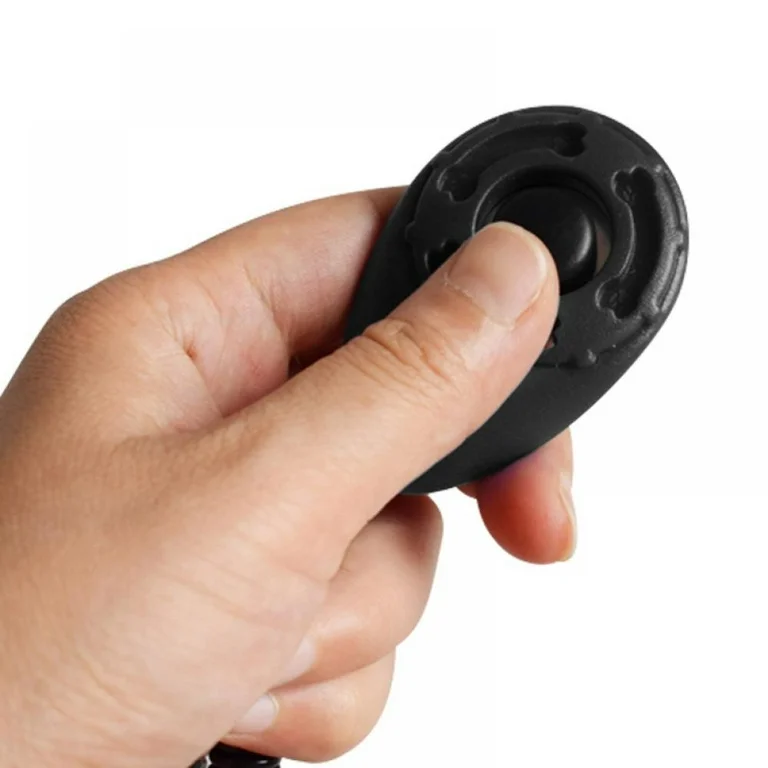The clicker is an incredibly versatile tool with a range of applications. It might seem simple, just a device that makes a sharp, clicking sound, but its uses go far beyond that. Whether in animal training, military operations, or even keeping track of event attendance, the clicker has proven itself invaluable. In this article, we’ll dive into what a clicker is, its various applications, and why it’s so widely used.
What is a Clicker?

A clicker, sometimes called a cricket, is a device designed to create a distinct clicking sound when activated by the user. This sound is usually generated through a piece of thin metal or plastic held inside a casing. The metal is slightly bent, and when you depress it, it “clicks” out of alignment, producing that sharp noise. Releasing it allows the metal to snap back, creating another click.
Clickers come in various forms—some are activated directly by pressing the metal, while others use a button that makes the metal click. Although the device might seem rudimentary, it has found applications in some surprising areas.
Clickers in Animal Training: A Game-Changer
The most well-known use of the clicker is in animal training, especially with dogs. However, clickers were originally introduced by marine mammal trainer Karen Pryor to communicate with dolphins and whales. These animals use a system of clicks and whistles, known as echolocation, to communicate with each other underwater. The clicker was a perfect match for this natural communication method.
Over time, trainers realized that clickers were not limited to marine animals. Nowadays, dog trainers commonly use clickers to mark the exact moment a dog performs a desired behavior. When paired with a treat or reward, the sound of the click lets the dog know they’ve done something right. This form of training, often referred to as positive reinforcement, has revolutionized how we communicate with animals.
How Clicker Training Works
Here’s how the process works in simple terms: the click marks the precise moment the behavior happens, and the treat reinforces that behavior. So, if a dog sits on command, you click at the exact moment its bottom touches the ground and then offer a treat. Over time, the dog begins to associate the click with positive outcomes and is more likely to repeat the behavior.
The beauty of clicker training lies in its clarity. The sound of the click is sharp and consistent, providing a distinct signal that the animal can easily recognize. This avoids confusion and speeds up the learning process.
A Historical Use: Clickers in World War II
Believe it or not, clickers played a crucial role during World War II. Allied paratroopers used them during Operation Overlord (D-Day) to covertly identify each other. This simple device became a lifeline on the battlefield.
Soldiers would click once, and if the person nearby was an ally, they’d respond with two clicks. This system was effective in identifying friend from foe in the dark or in chaotic situations. The simplicity and reliability of the clicker made it a perfect tool for this high-stakes scenario.
Clickers in Human Learning: TAGteach

Beyond animal training and military use, clickers have found a role in human education through a method known as TAGteach. This teaching system uses the clicker to provide immediate, audible feedback to students. Just like in animal training, the click marks the exact moment a correct action occurs, helping students to learn more quickly and effectively.
In educational settings, TAGteach has been used to teach everything from dance to sports to academic skills. The method taps into the brain’s natural reward system, helping students to stay focused and engaged as they receive clear signals of their progress.
The Clicker as a Counting Device
Another common use of clickers is as a handheld counting device. Event organizers and venue staff use them to keep track of how many people enter a space, ensuring fire safety limits aren’t exceeded. These devices are often mechanical but can also be digital. The sharp clicking sound provides an audible confirmation for each count, making it a simple but effective tool for maintaining order in busy environments.
Mechanical vs. Digital Clickers
Mechanical clickers are the classic version of the device, favored for their simplicity and durability. They usually consist of a rotating mechanism that advances the count by one with each click. On the other hand, digital clickers are more modern and typically feature an LCD screen that displays the count. While digital clickers might offer more precision, many people still prefer the tactile and audible feedback provided by mechanical clickers.

Archery and Board Games: Lesser-Known Uses for Clickers
Interestingly, clickers have also found a niche in archery and board games. In archery, clickers are used on recurve bows to signal when the correct draw length has been achieved, ensuring consistency in the archer’s shots. This tool helps archers improve their accuracy by providing instant feedback, similar to its use in other fields.
In some board games, especially those modeled after game shows, clickers are included to emulate the buzzers commonly used in such competitions. While this is a more lighthearted application, it’s yet another example of the clicker’s versatility.
Conclusion: A Small Device with Big Impact
Who knew that such a simple device could have so many applications? From training animals to ensuring safety in crowded venues, the clicker has proven itself to be a surprisingly powerful tool. Whether you’re a dog trainer, an event organizer, or even an archer, the clicker’s ability to provide immediate, clear feedback makes it indispensable.
Its role in World War II and its continuing use in education and entertainment highlight just how versatile this little device is. So, the next time you hear that familiar clicking sound, remember—it’s more than just a noise. It’s a signal, a marker, and in many cases, a game-changer.